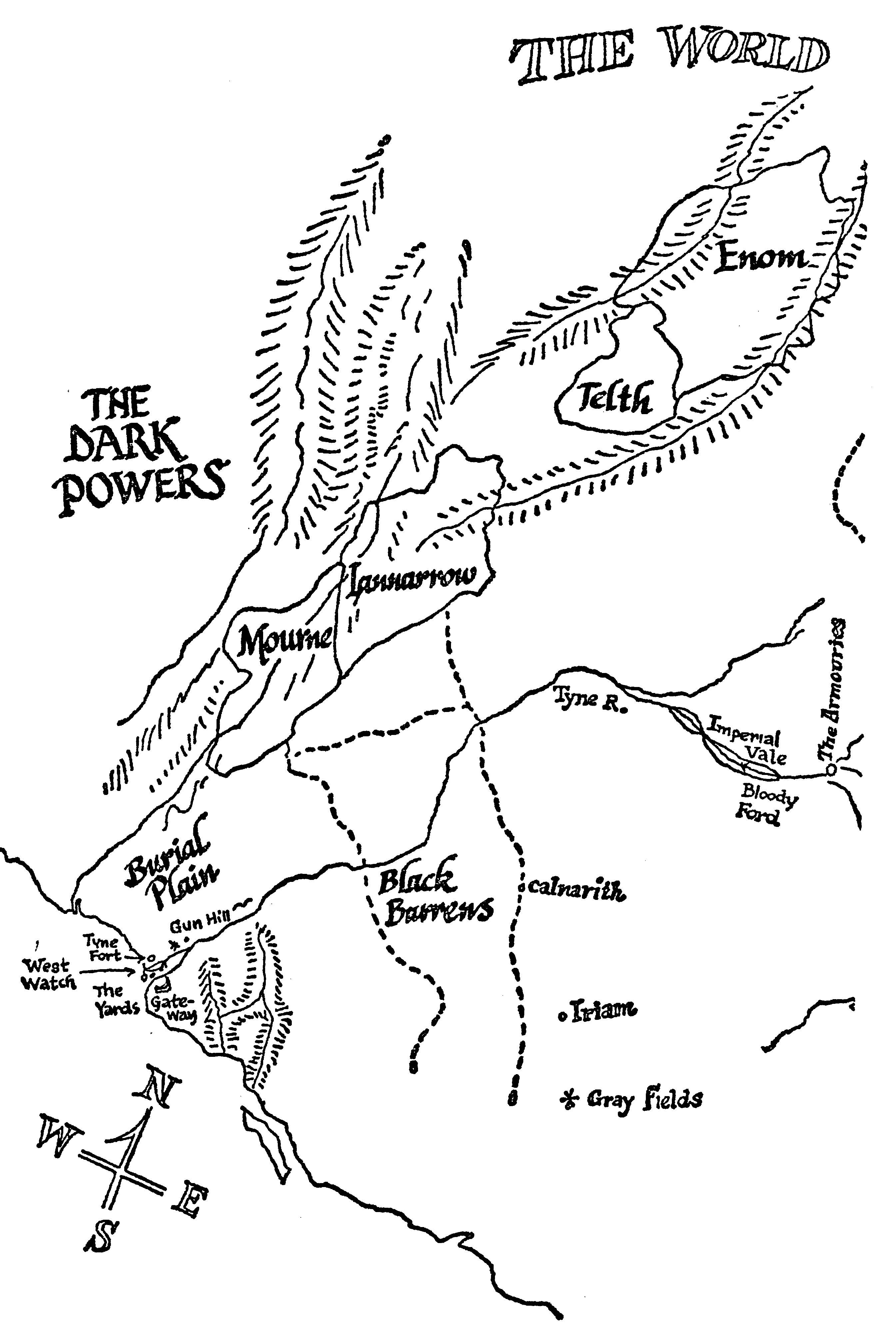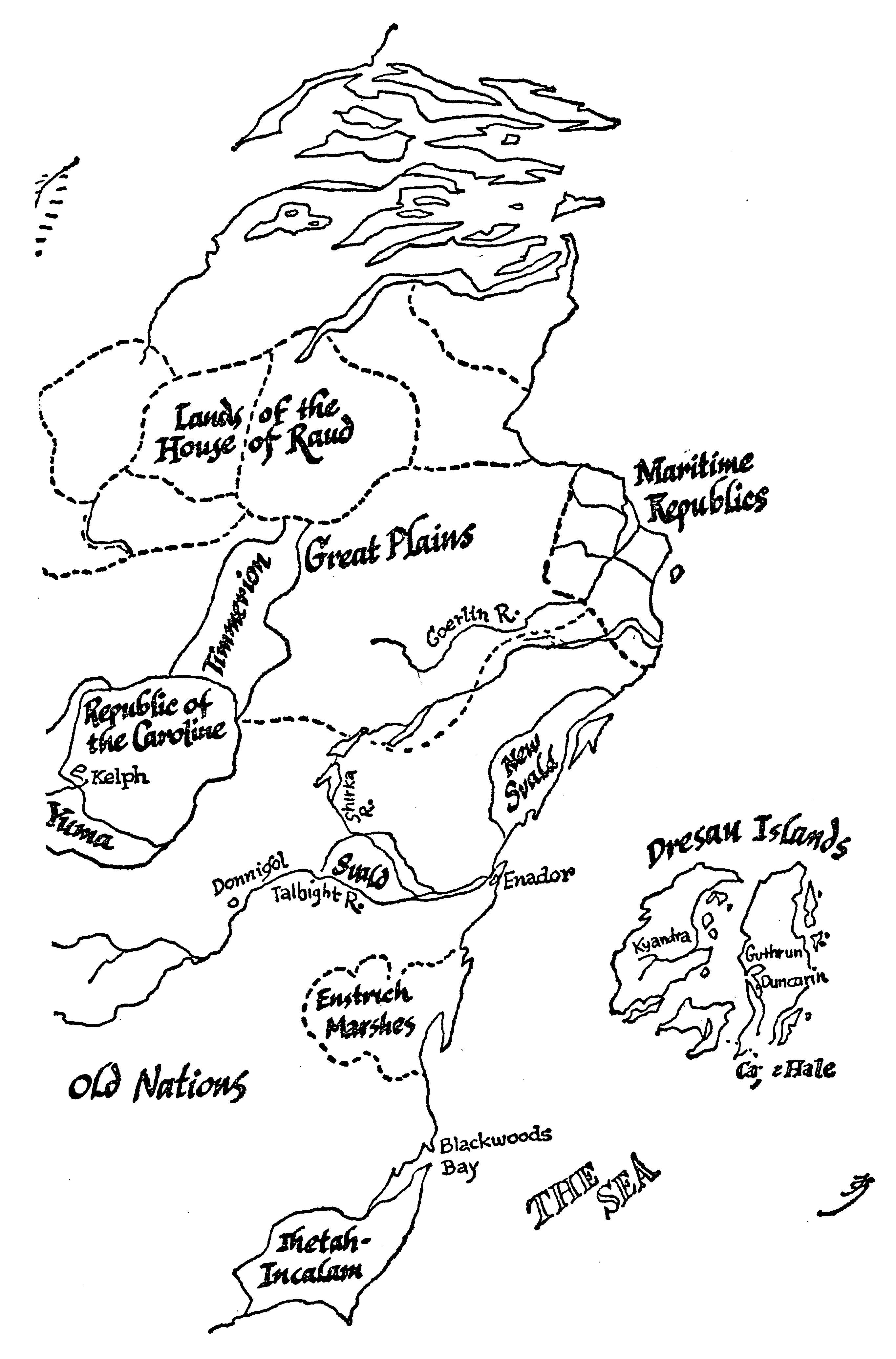


The three novels collected here were not originally designed as a unified trilogy. The thought of finishing one story at a time, let alone a novel, was daunting enough for me when I started. But completion of the first unexpectedly suggested the second, which may therefore be loosely considered a sequel. Both of them were written when I was in college, and things in the 1965–1968 time-frame supplied plenty of desperate energy to fuel their imaginings. A long break followed, but when I picked things up again with The Siege of Wonder, the appeal of violent histories distant enough to be myths and the incongruity of the pedestrian and the recognizable in direct conflict with the literally divine and magical in such settings was as strong as it had been before.
The first book is really a set of related stories about individuals who would inevitably succumb but who would first brace and equip themselves in evocative armor that, to me at least, recalled what had happened before, even if only in others' imaginations. These characters acted for wrong or even reprehensible reasons as often as they did for worthy ones, but they still moved forward against overpowering oppositions. I found it easier for me to describe these people if they were on the bridge of a heavy cruiser I knew to be the Des Moines (given the nom de guerre, Havengore, in the first two novels), or at the controls of bombers I could visualize as Heinkel 111s or B-52s. Pitting such machines and people, who vaguely hold the same ideas and values of the times in which they really existed, against dragons and demons and knights was and remains very appealing to me. It let me place historically validated courage and power, and suffering, firmly in realms of fantasy. The chance to assign a literal reality to these collisions, of the mortal against the immortal, ambition against self-destruction, and help them play out against each other was a great reason for the first book, and I found the idea appealing enough to come back to it afterward.
The stage setting for much of this was war, my acquaintance with which has been, by good fortune, entirely historical and literary. For reasons that had everything to do with an introverted nature instead of any precociousness, I began reading histories of real conflicts in grade school. I still have The Rise and Fall of the Third Reich I doggedly read in junior high school, realizing how little I was grasping. I have no idea where the appeal of such things came from, so I rationalize it as part of a larger fascination with modern history. Most of my reading remains history, not novels. The working title of my first book was, unsurprisingly, A History of the Ship. It was changed to Lords of the Starship by the editor at Ace Books, Don Wollheim, who was then riding high on his inspired introduction of The Lord of the Rings to American readers.
I read about people in modern wars, both real and imagined. A lot was really adventure, Alistair Maclean and C.S. Forester were favorites, but others were harsher, like James Jones, Nicholas Monserrat, and John Hersey. Of course, there was Eric Maria Remarque, but everyone in sophomore high school English had to read him.
I should further confess a melancholy that also began too early. It was and isn't anything paralytic but was the reason for some things that might not have happened as they did if I had not been so distracted. Tragic histories then awaited my imagination and offered confirmation if not relief. They possessed both grandeur and terrible ruin, which matched the way I read it had always been, and while the latter would almost always triumph, the former's doomed gallantry and aesthetic appeal was undeniable. Individual people fit uncomfortably into this outlook and I found it easier to understand them when they were already embarked on some great tide, rather than simply trying to understand each other.
I started sending short stories to the usual magazines in high school. A handwritten rejection letter from Avram Davidson, then the editor of the The Magazine of Fantasy and Science Fiction, in 1964 meant I was getting close.
Kenyon College in 1964–1968 was still a men's school and not a place of great social polish—as if any American college or university was or wanted to be in those tumultuous years. But Kenyon went out of its way to sidestep the collegiate avant-garde and do things as idiosyncratically as possible. It also possessed a great and genuine appreciation for undergraduate learning and a literary tradition that ran through John Crowe Ransom and Randall Jarrell. It was isolated and insular. It was a perfect place for my accumulated imaginings to find their way into stories and I wrote both Lords of the Starship and Out of the Mouth of the Dragon there. But by junior year, 1966–1967, the world outside was upended by the civil rights struggle and the Vietnam War. There was also the permanent droning of the Cold War in the background.
I admit the sense of despair and failure got a little out of control with Out of the Mouth of the Dragon. But it worked as a story and I am much prouder of its excesses now.
I returned to the idea of characters caught up in a great sweep of an irresistible history years later with The Siege of Wonder (the third book, The Day Star, was purposely gentler than its predecessors and does not fit the cycle collected here). Things take longer when you leave law school and have a regular job. Of the three in this collection, this one most depends on the prosecution of a declared war between two great camps: science on the one hand (this is not a swipe at the awful cover on the original hardcover edition) and magic, as real and literal as the other. I know it may not seem that way to the reader, but to my own perception, the side of science was the more attractive and tragically romantic because of its discoveries of limitations and mortality. Its enemy wizards could not afford such self-awareness.
J. R. R. Tolkien survived the worst of the Great War and, fantastical though his epic is, it was told from inside a maelstrom, and that shows in the humanity of many of his characters and the ferocious scale of what confronts them. Others who have endured war have the same kind of authenticity. I've tried to come close to them, writing as I have from the outside. I have no wish to get any closer.
—Mark S. Geston